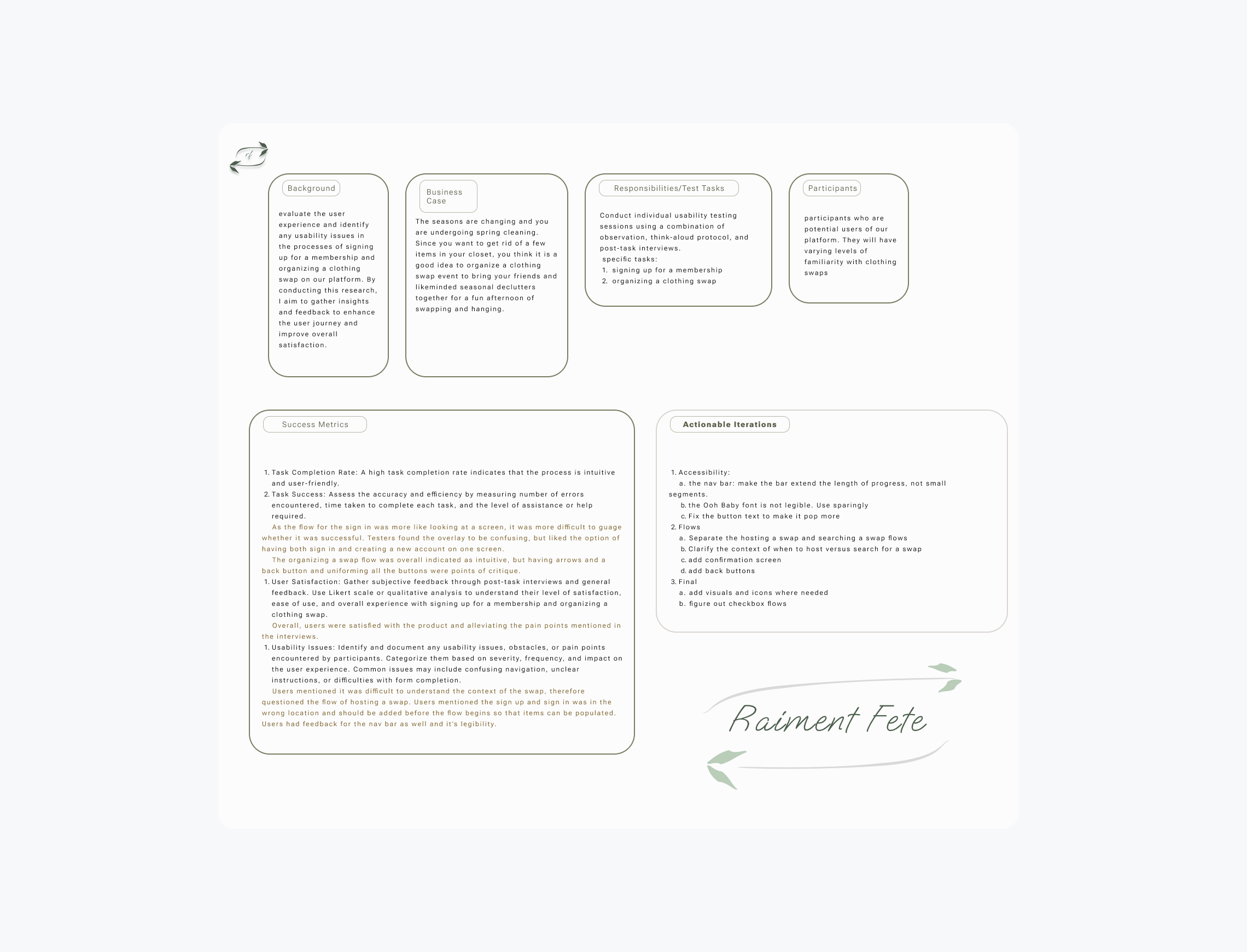

making sustainable fashion accessible and fun by helping people swap clothes in their local communities.
I designed the event experience that lets user create, discover, and RSVP to local swap events. I focused on clear navigation, social trust, and mobile first usibility. I also ran user interviews to understand community behaviors and prototyped flows for hosting and attending swaps.
Sole product designer on the project leading both UX and UI efforts from concept to prototype.
People want to participate in sustainable fashion but often lack easy, trustworthy ways to exchange clothes locally. Existing platforms are either too transactional, hard to navigate, or don’t foster community. This makes it difficult to find or organize clothing swap events.
In a perfect world, it would be easy to transport a garage sale's worth of items twenty blocks without paying hefty $$$ or breaking your back during transport. For the swap hosts I interviewed, the general consensus is that living in NYC made it horribly inconvenient to plan swaps. People wanted a service that would provide amenities to help the hosts.
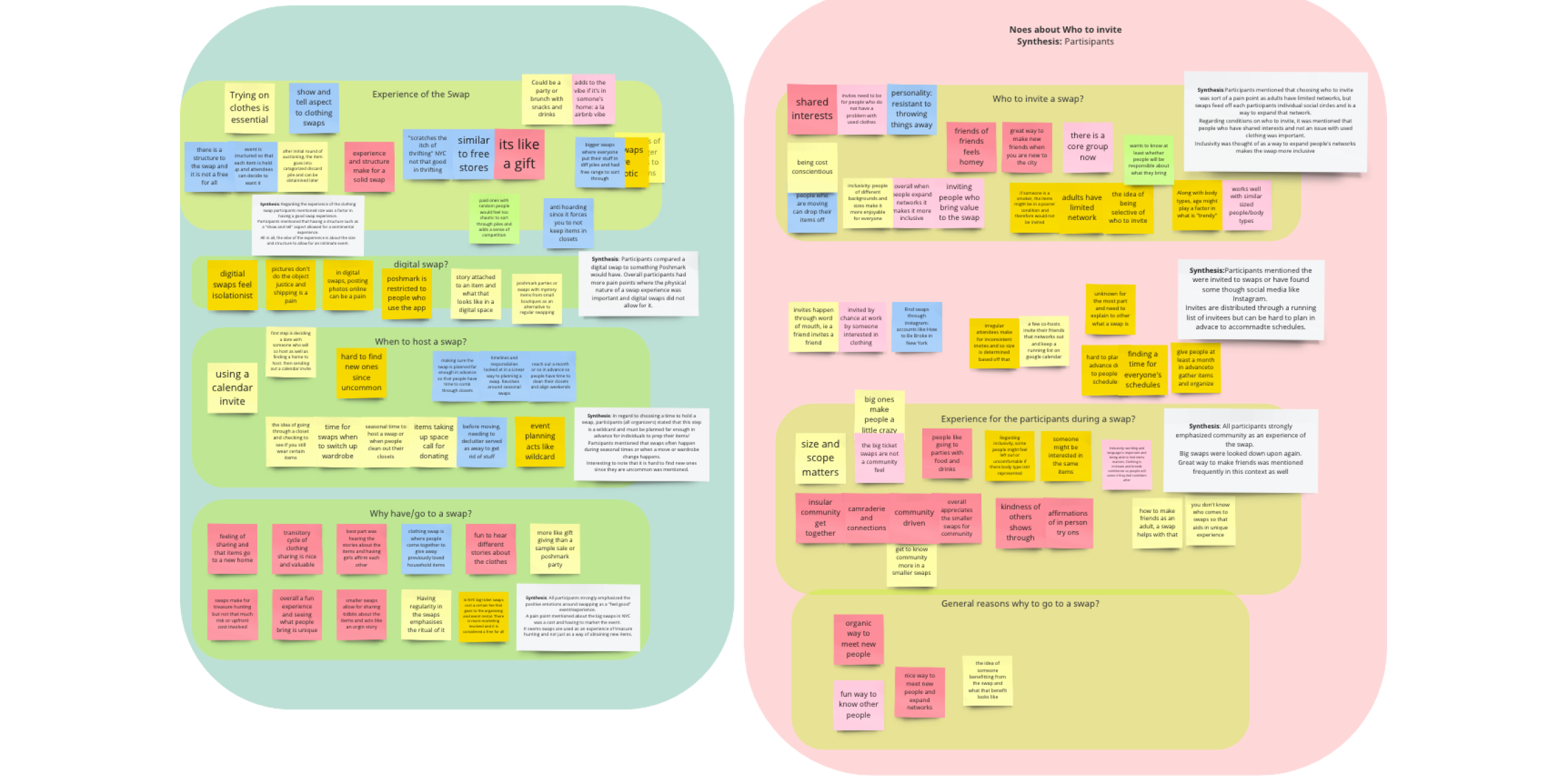
To sum these notes please see the below three points:
In exploring NYC's swap systems, I began with a high level comparison of businesses in the sustainable fashion industry. This gave me some insight on how New Yorkers participated in exchanging goods, but overall information about city wide clothing swaps or public swaps was very limited.
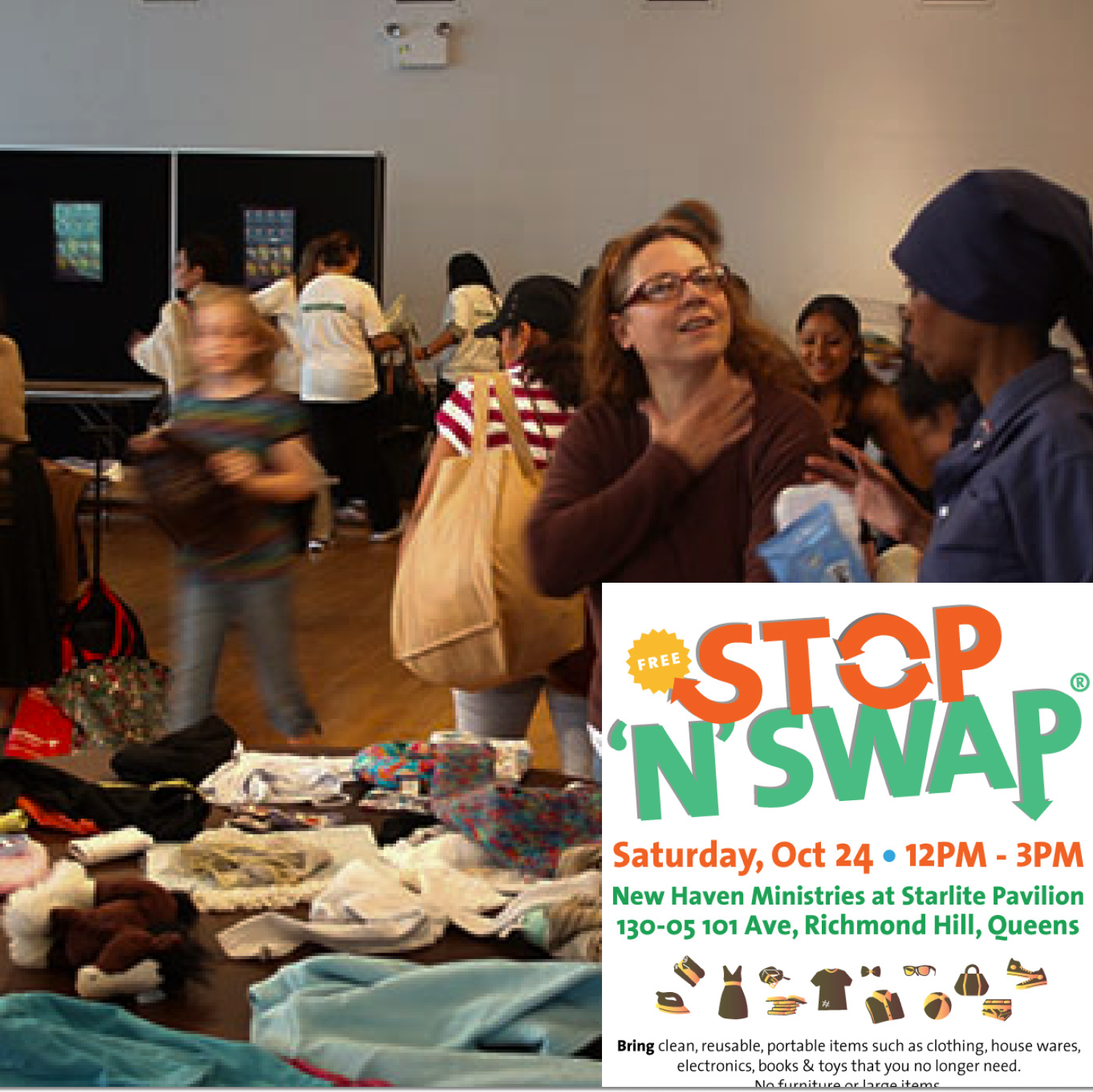
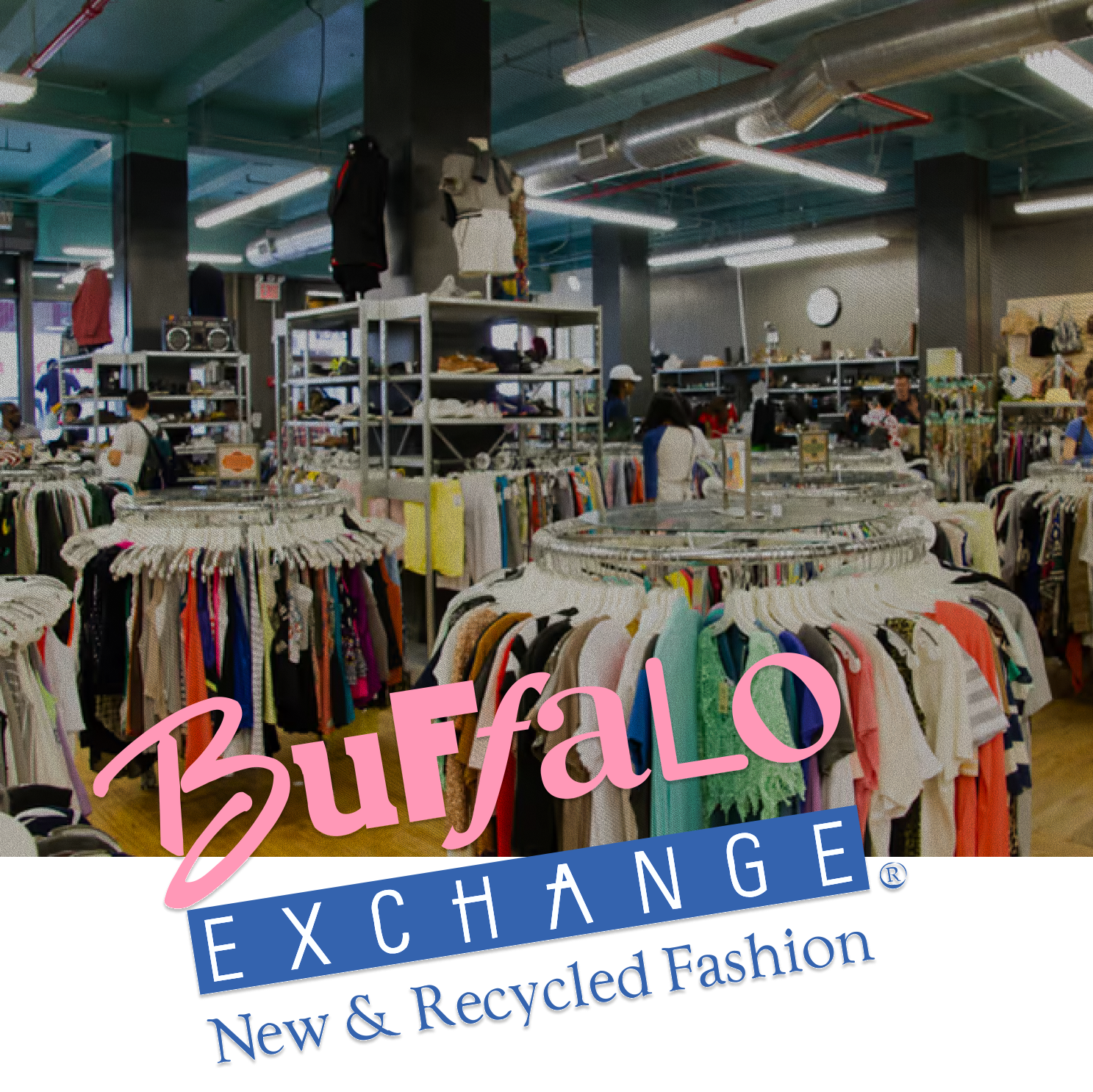
In surveying brands like Buffalo Exchange and local community events I discovered the following:
The people I interviewed became the model of my user personas (see below). This community valued sustainability, community, resourcefulness, and inclusivity. They believed to make a positive impact on the planet and in a social/communal way.
However, they also encountered challenges in finding a suitable venue for the event, attracting enough participants to make the event successful, and managing the logistics of the event (e.g., sorting and organizing clothing items).
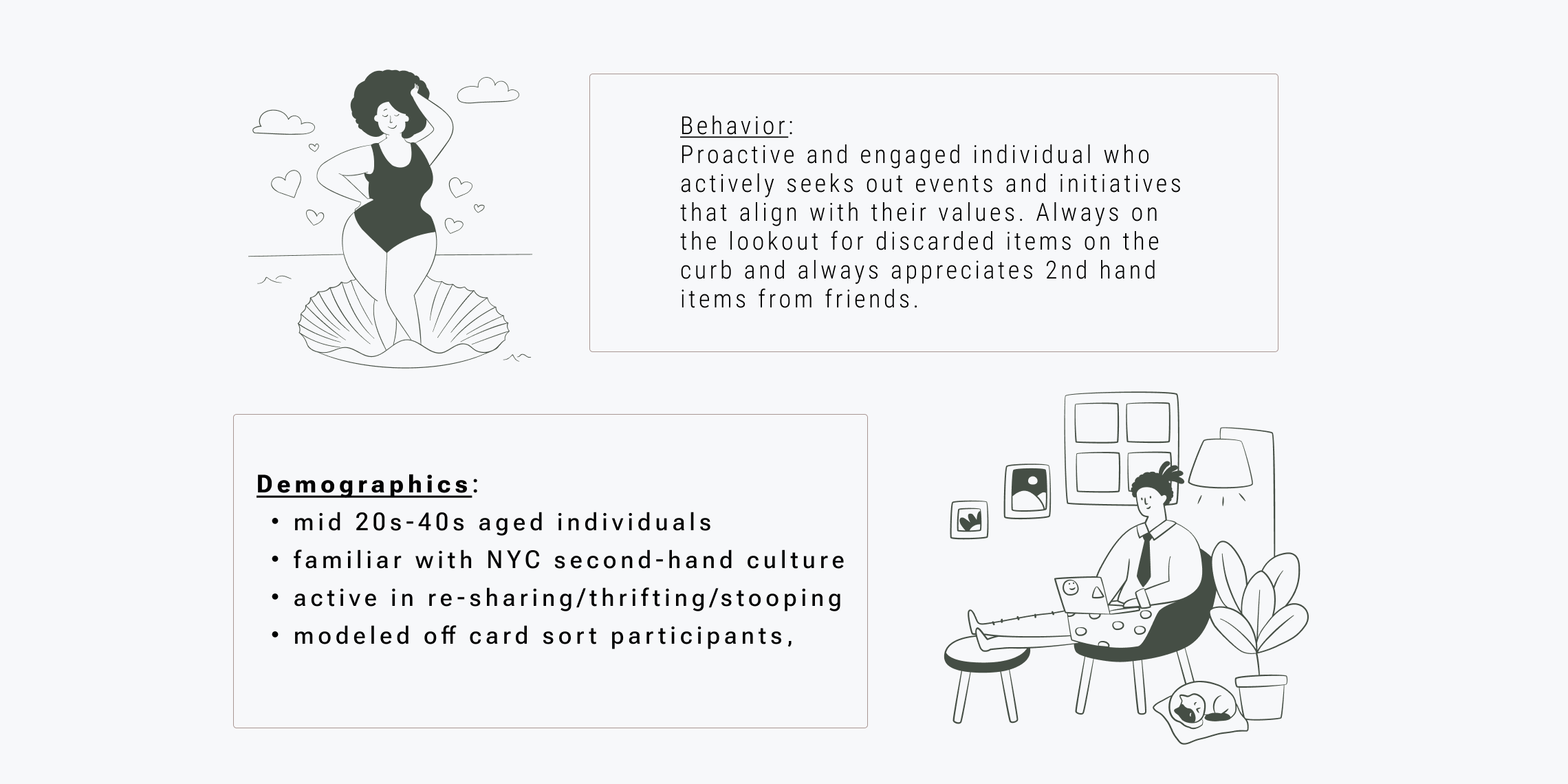
I outlined business and user goals as well as tech considerations regarding budget and time. I listed out all the features mentioned from my interviews and prioritized them using the P1, P2 matrix.
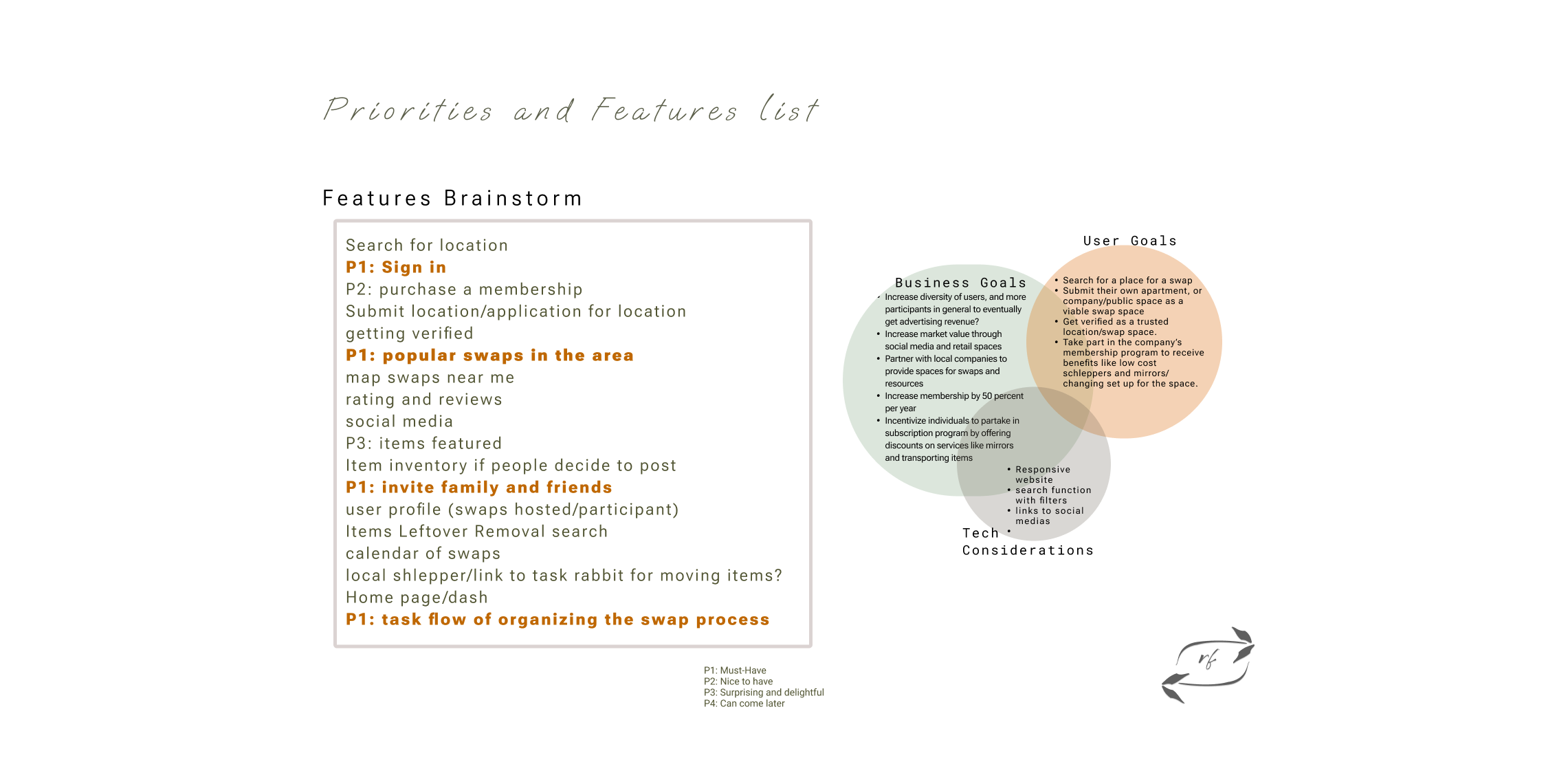
Using the framework of an event build, I laid out the decisions in this User Story. I found inspiration in apps like Partiful and Eventbrite, but with adding details about how to host a clothing swap.

After taking consideration of business goals, tech limits, and time constraints, I created the first pass of wireframes. I experimented with adding checkout for membership/subscription, but ultimately that was scrapped in the later wireframes.

The UI palette was inspired by colors of the transitional seasons (Spring and Fall). I chose earth tones contrasted by pops of bright floral pink and orange to form the aesthetic foundation.
The logo has a handwritten and informal look to balance the grounding color scheme.

Using the Procreate and the Figma Pen tool, I shaped custom illustrations for the app. These illustrations served as pictorial examples of what a swap could be like.


The home page focuses on clarity, mission and community while adding info about what the app provides.


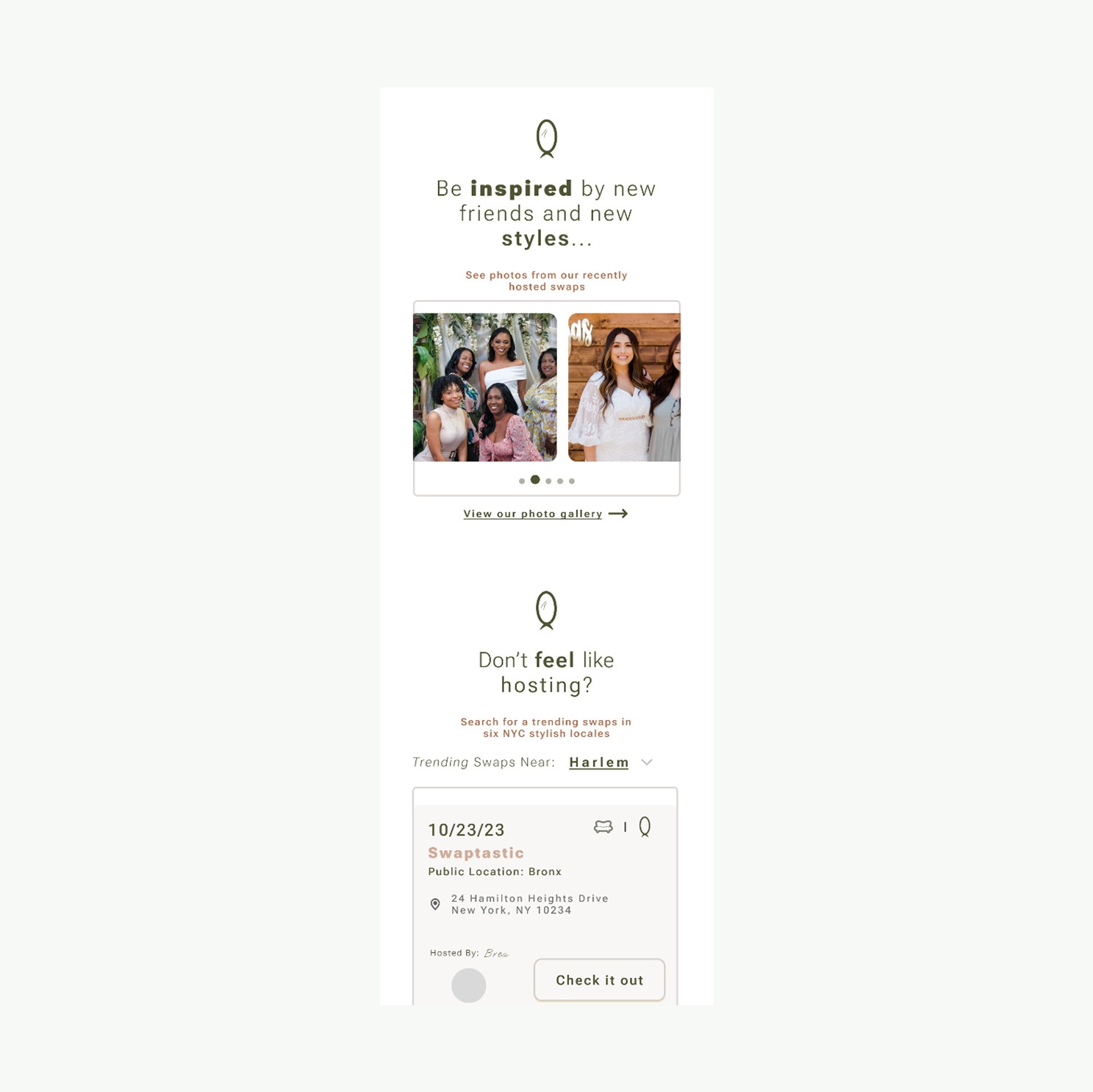
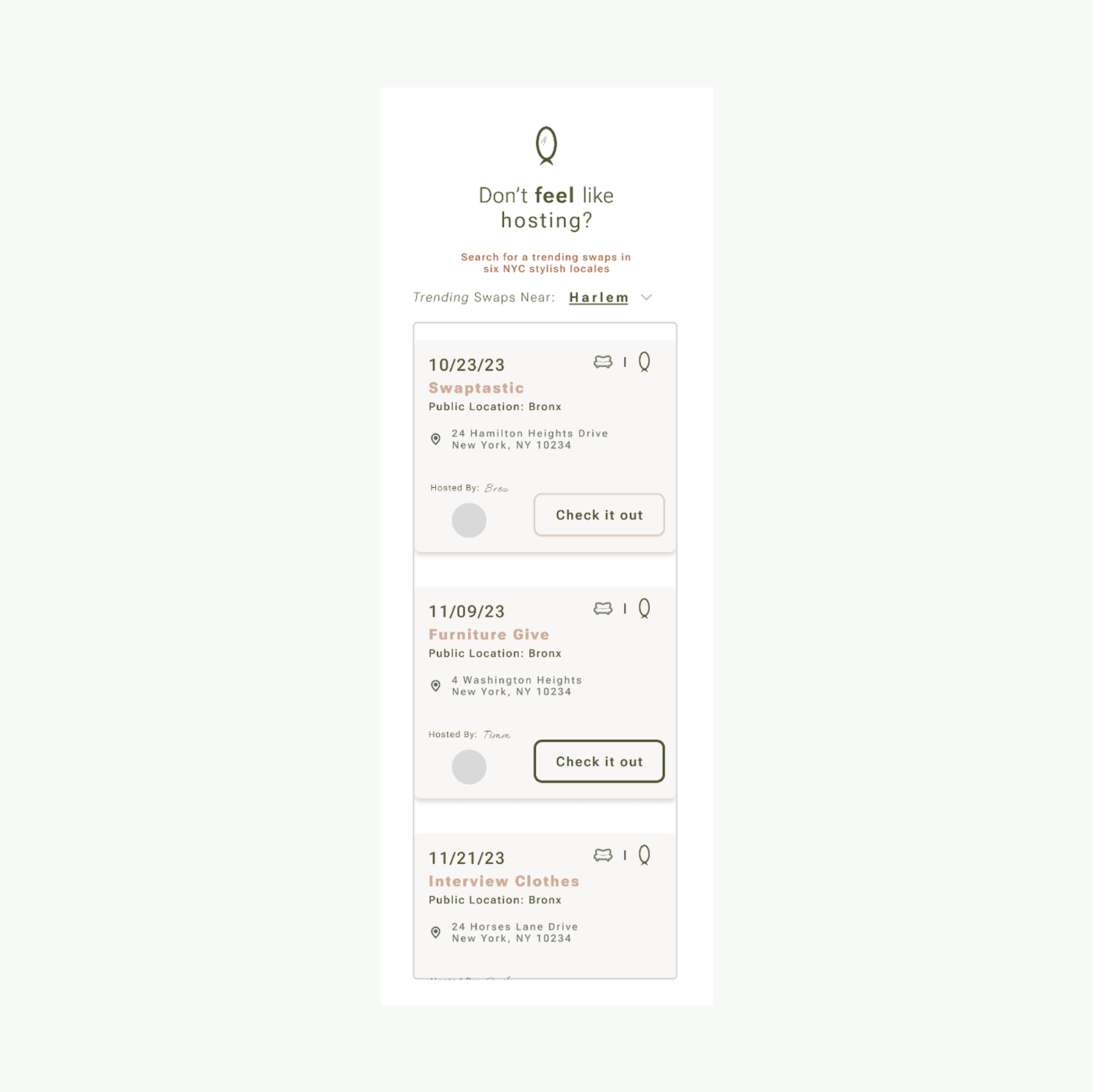
Full screens below:
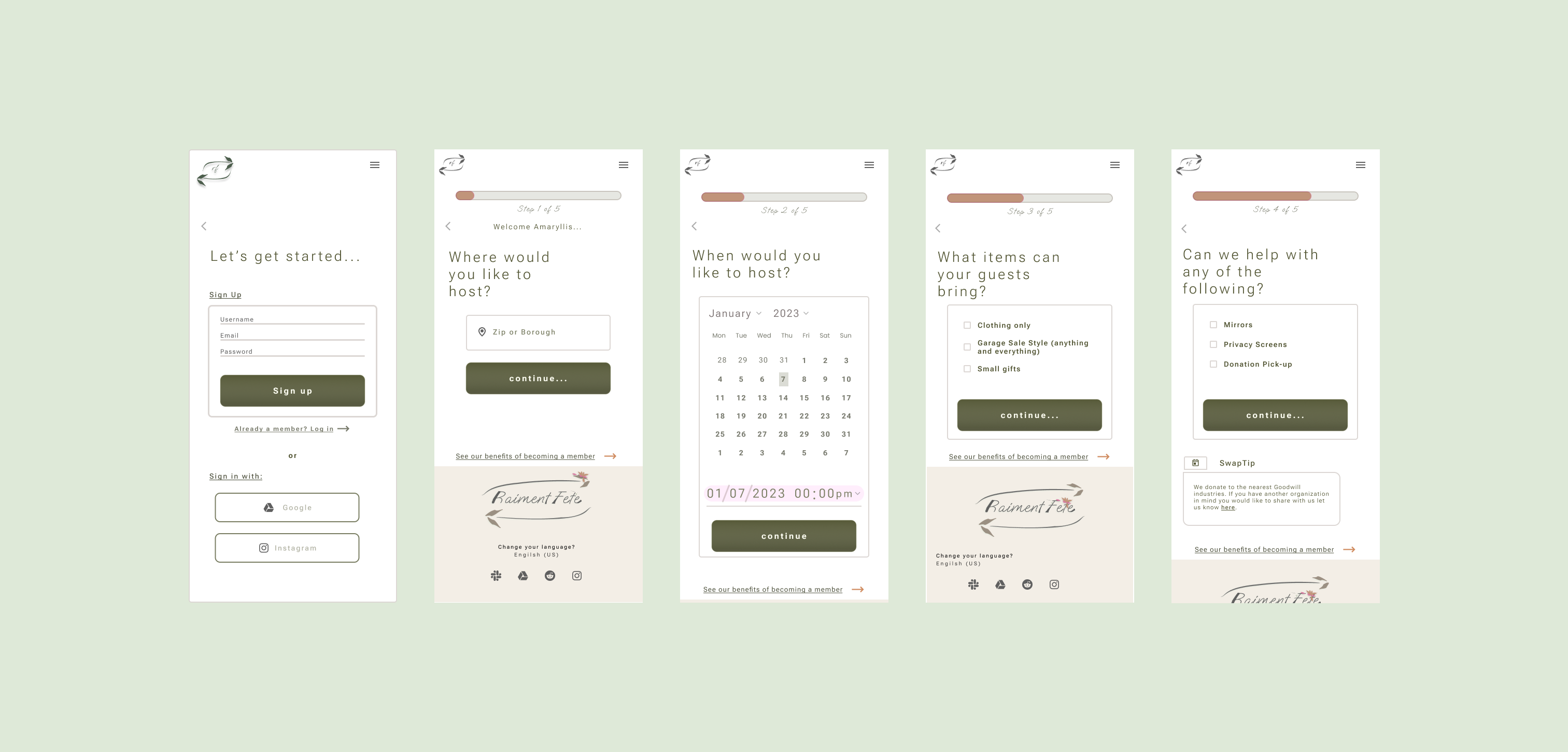
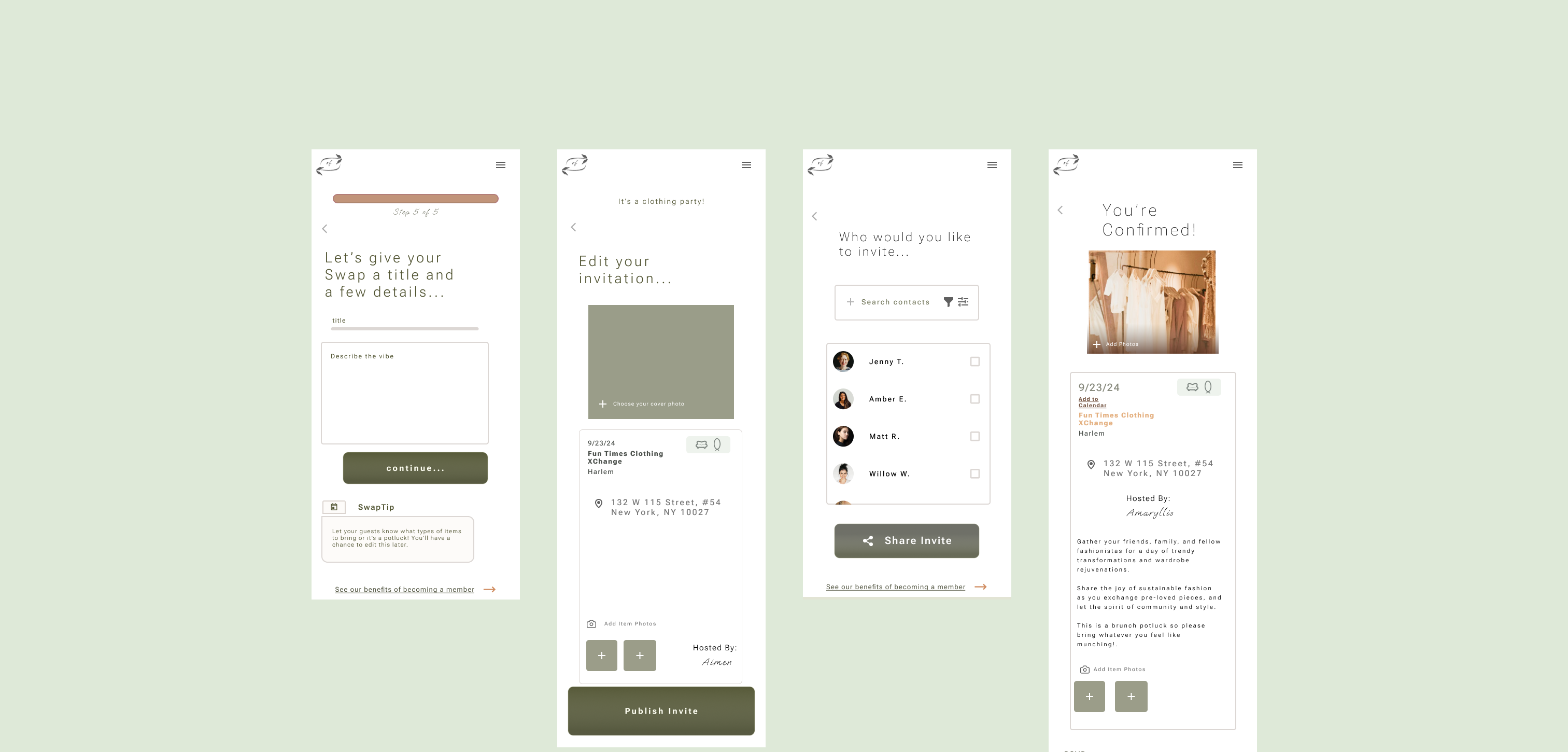
From my experience, clothing swaps are an eco-friendly way to refresh one's wardrobe, while also meeting new friends and like-minded community. In interviewing my co-hosts, as well as individuals who previously attended clothing swaps and were familiar with the process. I wanted to understand how they engaged in the second hand community space.
By focusing on a museum educator, a tourist, and an elementary school teacher, I captured a range of user goals and expectations to inform a more inclusive and adaptable experience.
